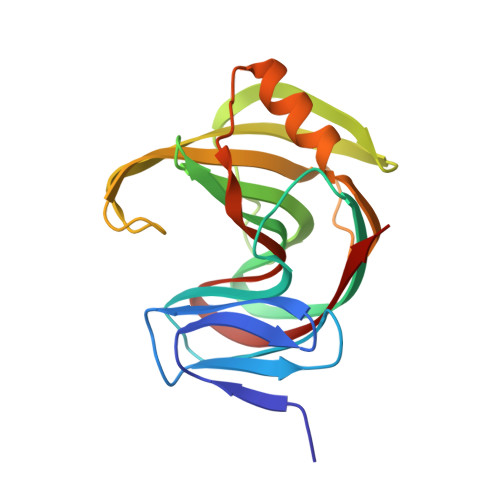Computational design of an endo-1,4-{beta}-xylanase ligand binding site.
Morin, A., Kaufmann, K.W., Fortenberry, C., Harp, J.M., Mizoue, L.S., Meiler, J.(2011) Protein Eng Des Sel 24: 503-516
- PubMed: 21349882
- DOI: https://doi.org/10.1093/protein/gzr006
- Primary Citation of Related Structures:
3MF6, 3MF9, 3MFA, 3MFC - PubMed Abstract:
The field of computational protein design has experienced important recent success. However, the de novo computational design of high-affinity protein-ligand interfaces is still largely an open challenge. Using the Rosetta program, we attempted the in silico design of a high-affinity protein interface to a small peptide ligand. We chose the thermophilic endo-1,4-β-xylanase from Nonomuraea flexuosa as the protein scaffold on which to perform our designs. Over the course of the study, 12 proteins derived from this scaffold were produced and assayed for binding to the target ligand. Unfortunately, none of the designed proteins displayed evidence of high-affinity binding. Structural characterization of four designed proteins revealed that although the predicted structure of the protein model was highly accurate, this structural accuracy did not translate into accurate prediction of binding affinity. Crystallographic analyses indicate that the lack of binding affinity is possibly due to unaccounted for protein dynamics in the 'thumb' region of our design scaffold intrinsic to the family 11 β-xylanase fold. Further computational analysis revealed two specific, single amino acid substitutions responsible for an observed change in backbone conformation, and decreased dynamic stability of the catalytic cleft. These findings offer new insight into the dynamic and structural determinants of the β-xylanase proteins.
Organizational Affiliation:
Department of Chemistry, Vanderbilt University, Nashville, TN 37235, USA.















